Saltwater pools have become increasingly popular among homeowners, and for good reason. They offer a more natural swimming experience, require less maintenance, and are gentler on the skin and eyes compared to traditional chlorine pools. If you're considering making the switch to a saltwater system for your above-ground pool, the Wesatho Salt Chlorine Generator is an excellent choice. In this guide, we’ll dive deep into everything you need to know about this system, from how it works to installation, maintenance, and troubleshooting. By the end, you’ll have all the information you need to decide if the Wesatho Salt Chlorine Generator is the right fit for your pool.

Why Choose a Saltwater System for Your Above-Ground Pool?
Before we get into the specifics of the Wesatho Salt Chlorine Generator, let’s talk about why saltwater systems are worth considering for above-ground pools.
- Gentler on Skin and Eyes: Saltwater pools use a chlorine generator to produce chlorine from salt, resulting in lower chlorine levels than traditional pools. This means less irritation for swimmers.
- Lower Maintenance: Once installed, saltwater systems require less daily maintenance compared to traditional chlorine pools. You won’t need to handle or store chlorine tablets or liquid.
- Cost-Effective in the Long Run: While the initial investment may be higher, saltwater systems can save you money over time by reducing the need for chemical purchases.
- Eco-Friendly: Saltwater pools use fewer harsh chemicals, making them a more environmentally friendly option.

Introducing the Wesatho Salt Chlorine Generator
The Wesatho Salt Chlorine Generator is a top-rated system designed specifically for above-ground pools. It’s known for its ease of use, durability, and efficiency. Here’s what makes it stand out:
- Perfect for Above-Ground Pools: Designed with above-ground pools in mind, the Wesatho system is compact and easy to install.
- Efficient Chlorine Production: It uses advanced electrolysis technology to convert salt into chlorine, ensuring a consistent and safe chlorine level.
- Durable Construction: Built with high-quality materials, this generator is designed to withstand the elements and provide years of reliable service.
- User-Friendly Controls: The system features simple controls, making it easy to adjust settings and monitor performance.
How Does the Wesatho Salt Chlorine Generator Work?
The Wesatho Salt Chlorine Generator operates using a process called electrolysis. Here’s a step-by-step breakdown of how it works:
- Add Salt to Your Pool: You’ll need to add the appropriate amount of pool-grade salt to your water. The recommended salt level for the Wesatho system is typically between 2,500 and 3,500 ppm (parts per million).
- Salt Dissolves in Water: As the salt dissolves, it creates a saline solution in your pool.
- Electrolysis Process: The generator’s cell uses an electrical charge to split the salt molecules (NaCl) into sodium and chlorine gas.
- Chlorine Sanitizes the Pool: The chlorine gas mixes with the water to form hypochlorous acid, which kills bacteria, algae, and other contaminants.
- Chlorine Reverts to Salt: After sanitizing the pool, the chlorine reverts back to salt, and the process repeats.
This continuous cycle ensures that your pool stays clean and safe with minimal effort on your part.
Installation Guide for the Wesatho Salt Chlorine Generator
Installing the Wesatho Salt Chlorine Generator is a straightforward process, but it’s important to follow the steps carefully to ensure optimal performance. Here’s a step-by-step guide:
Step 1: Gather Your Tools and Materials
Before you begin, make sure you have the following:
- Wesatho Salt Chlorine Generator unit
- Pool-grade salt
- Screwdriver
- Pipe cutter (if needed)
- Teflon tape
- Hose clamps
Step 2: Choose the Right Location
The generator should be installed near your pool pump and filter system. Ensure it’s placed on a level surface and protected from direct sunlight and extreme weather conditions.
Step 3: Install the Flow Switch
The flow switch is a critical component that ensures the generator only operates when water is flowing through the system. Follow the manufacturer’s instructions to install it in the correct position.
Step 4: Connect the Generator to Your Pool’s Plumbing
Using the provided fittings, connect the generator to your pool’s return line. Be sure to use Teflon tape on all threaded connections to prevent leaks.
Step 5: Add Salt to Your Pool
Calculate the amount of salt needed based on your pool’s volume and the manufacturer’s recommendations. Spread the salt evenly across the pool and allow it to dissolve completely.
Step 6: Power Up the System
Once everything is connected, plug in the generator and turn it on. Set the desired chlorine output level and let the system do its job.

Maintenance Tips for Your Wesatho Salt Chlorine Generator
One of the biggest advantages of the Wesatho Salt Chlorine Generator is its low maintenance requirements. However, there are a few key tasks you’ll need to perform to keep it running smoothly:
- Check Salt Levels Regularly: Use a salt test kit to ensure the salt concentration stays within the recommended range. Add more salt as needed.
- Clean the Cell: Over time, calcium deposits can build up on the generator’s cell. Remove the cell and clean it with a diluted acid solution (follow the manufacturer’s instructions).
- Inspect the Flow Switch: Make sure the flow switch is functioning properly and free of debris.
- Monitor Chlorine Levels: Use a pool test kit to check chlorine levels weekly and adjust the generator’s output if necessary.
- Winterize the System: If you live in a cold climate, remove the generator and store it indoors during the winter months to prevent damage.
Troubleshooting Common Issues
Even the best systems can encounter issues from time to time. Here are some common problems you might face with the Wesatho Salt Chlorine Generator and how to resolve them:
1. Low Chlorine Output
- Possible Causes: Low salt levels, dirty cell, or incorrect settings.
- Solution: Check and adjust salt levels, clean the cell, and ensure the generator is set to the correct output level.
2. High Salt Levels
- Possible Causes: Over-salting or inaccurate salt readings.
- Solution: Dilute the pool water by adding fresh water and retest salt levels.
3. No Flow Detected
- Possible Causes: Clogged filter, closed valves, or a malfunctioning flow switch.
- Solution: Check and clean the filter, ensure all valves are open, and inspect the flow switch for damage.
4. Error Codes
- Possible Causes: Various issues, such as low salt, high salt, or cell problems.
- Solution: Refer to the user manual for specific error code explanations and troubleshooting steps.
Frequently Asked Questions
Q: How much salt do I need for my pool?
A: The amount of salt required depends on your pool’s volume. For most pools, the recommended salt level is between 2,500 and 3,500 ppm. Check the manufacturer’s guidelines for precise measurements.
Q: Can I use regular table salt?
A: No, you should only use pool-grade salt, which is free of additives and impurities that could damage the generator.
Q: How long does the cell last?
A: The lifespan of the cell depends on usage and maintenance, but most cells last between 3 to 5 years.
Q: Is a saltwater pool safe for children and pets?
A: Yes, saltwater pools are generally safer and gentler than traditional chlorine pools. However, it’s still important to supervise children and pets while they’re in or near the pool.
Final Thoughts
The Wesatho Salt Chlorine Generator is a reliable and efficient solution for above-ground pool owners looking to enjoy the benefits of a saltwater system. With its easy installation, low maintenance requirements, and user-friendly design, it’s an excellent investment for anyone seeking a cleaner, more enjoyable swimming experience.
By following the tips and guidelines outlined in this guide, you’ll be well-equipped to install, maintain, and troubleshoot your Wesatho system with confidence. So, dive in and start enjoying the crystal-clear waters of your saltwater pool today!


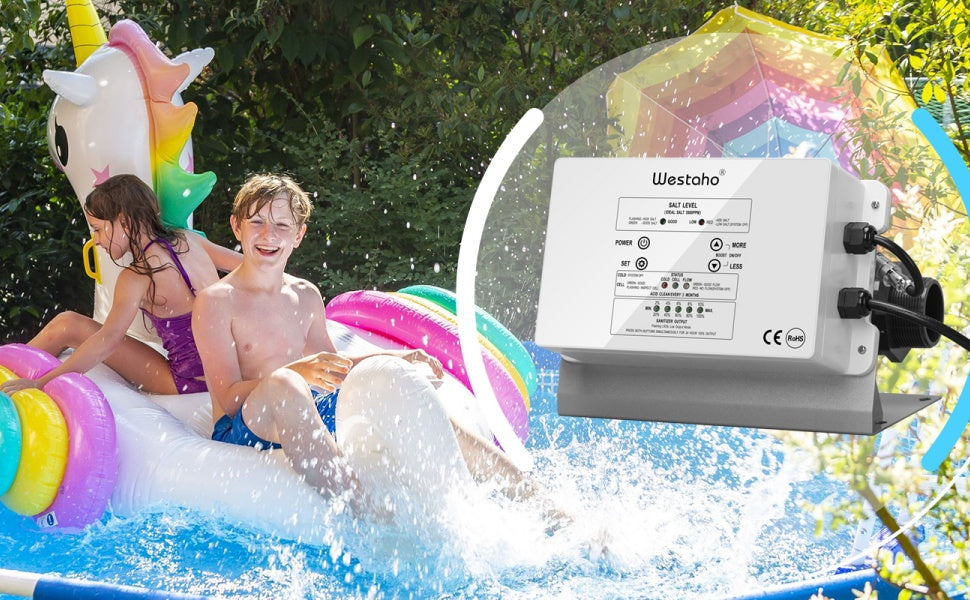
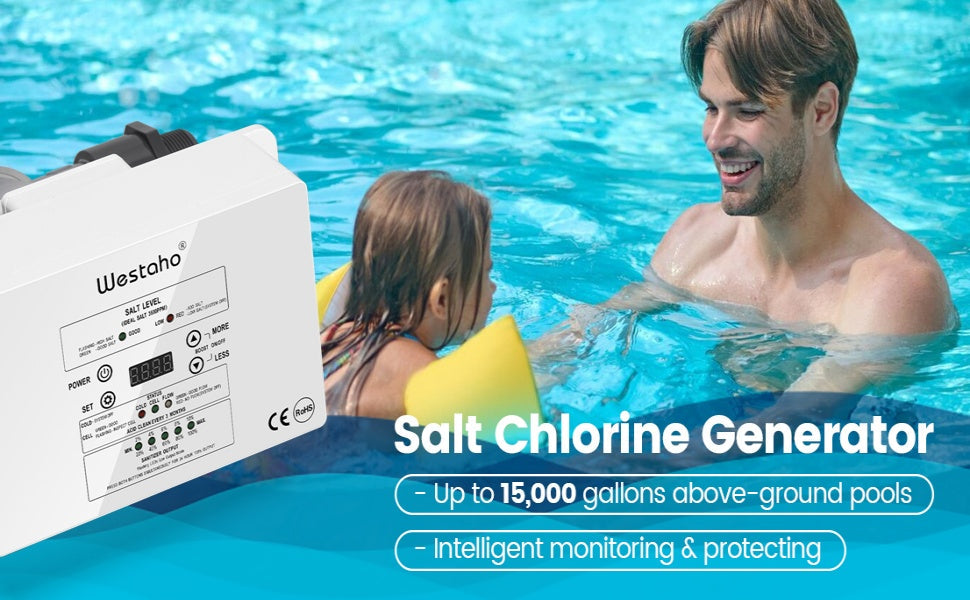
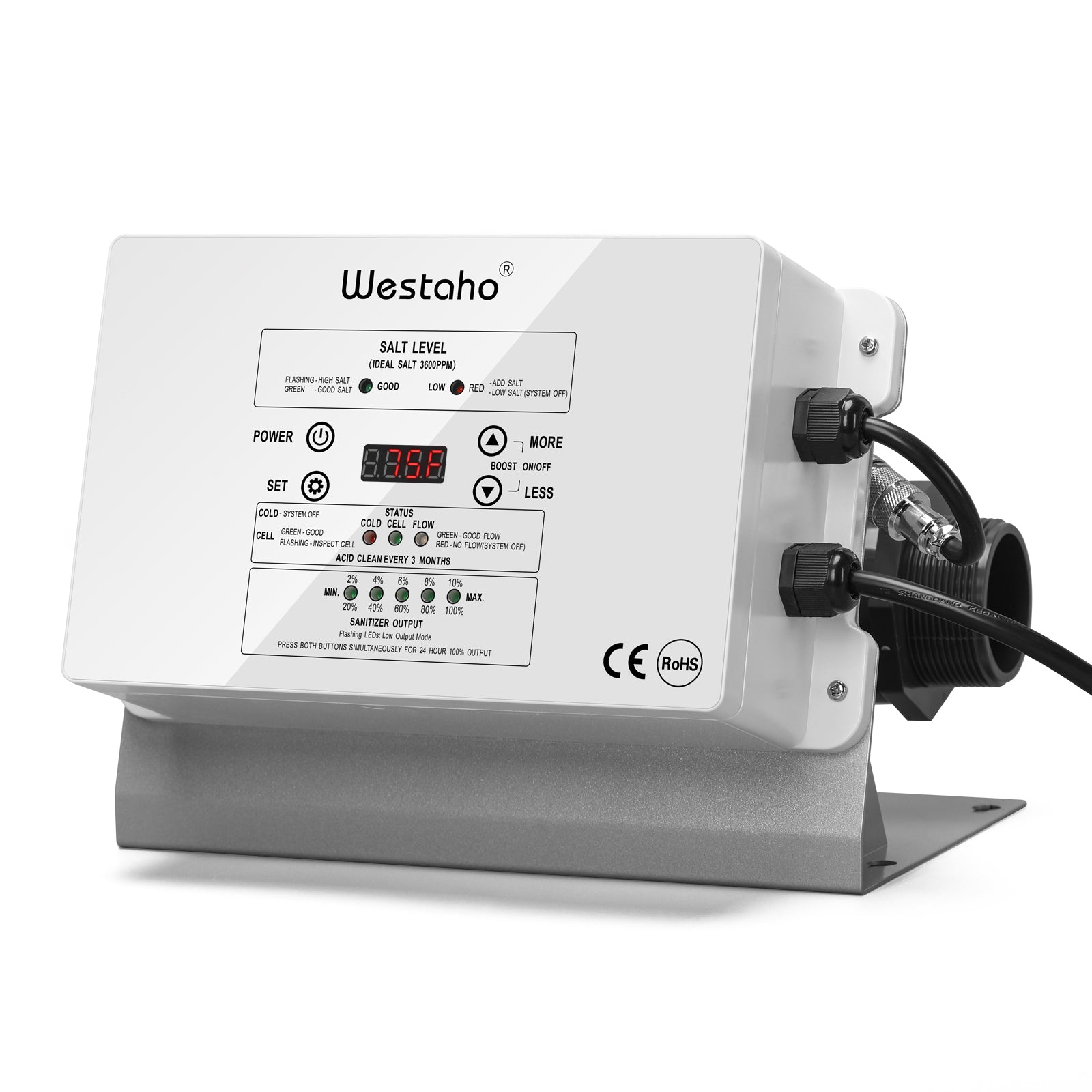
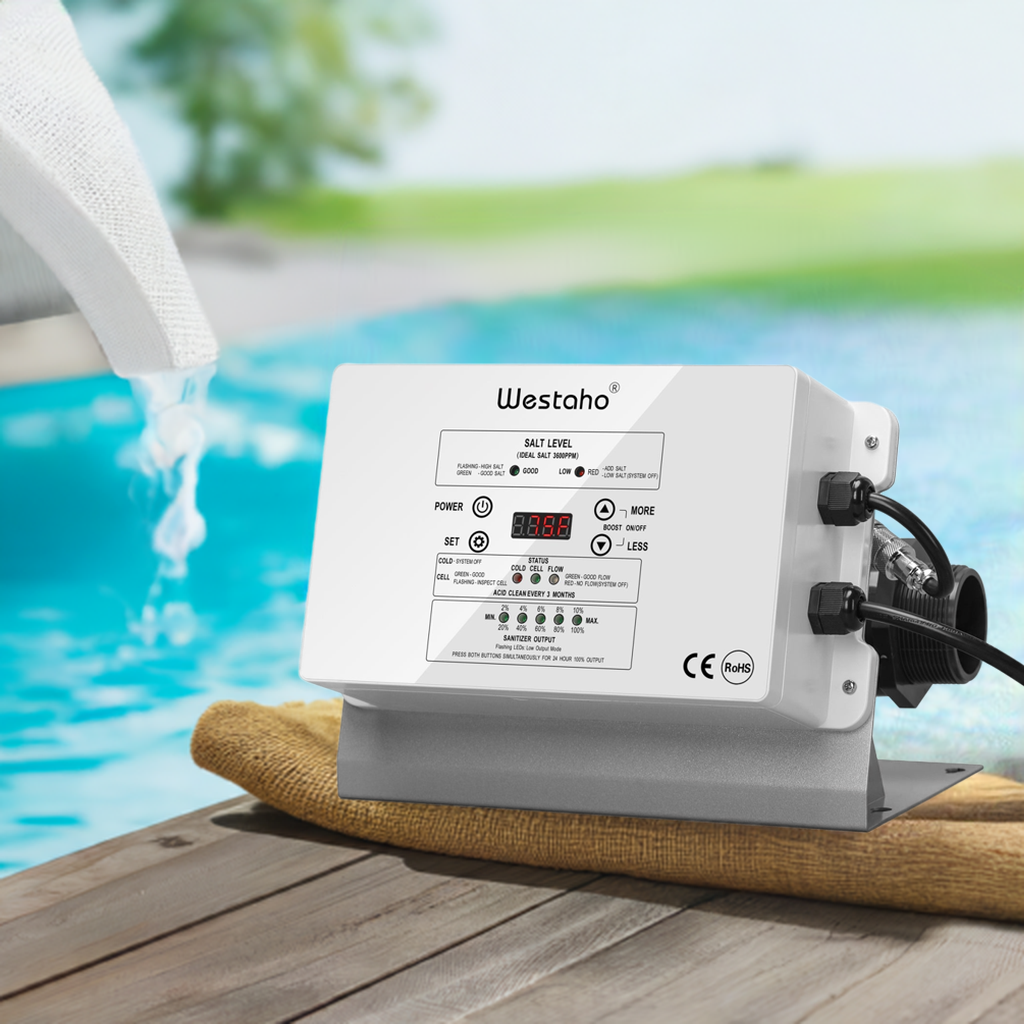
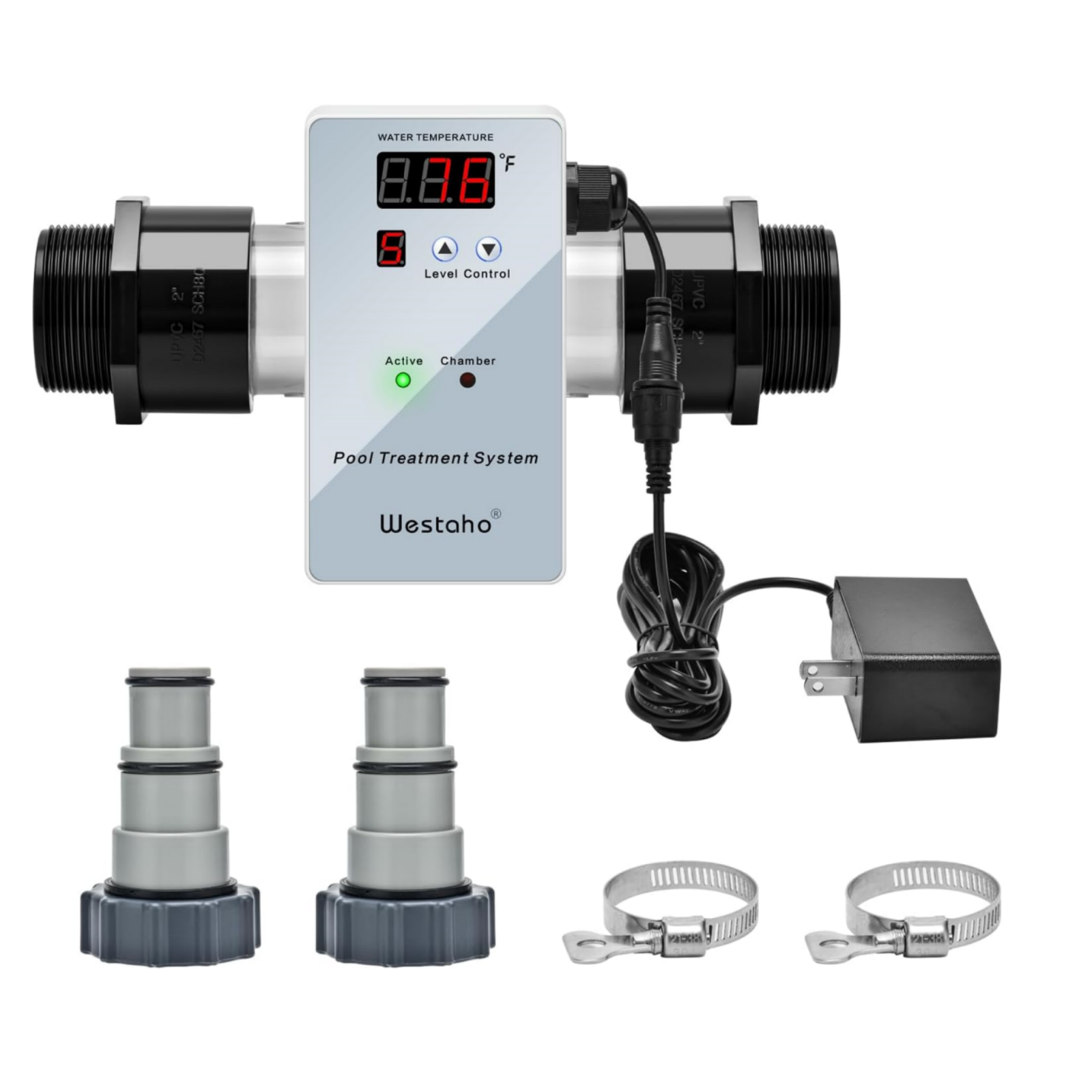
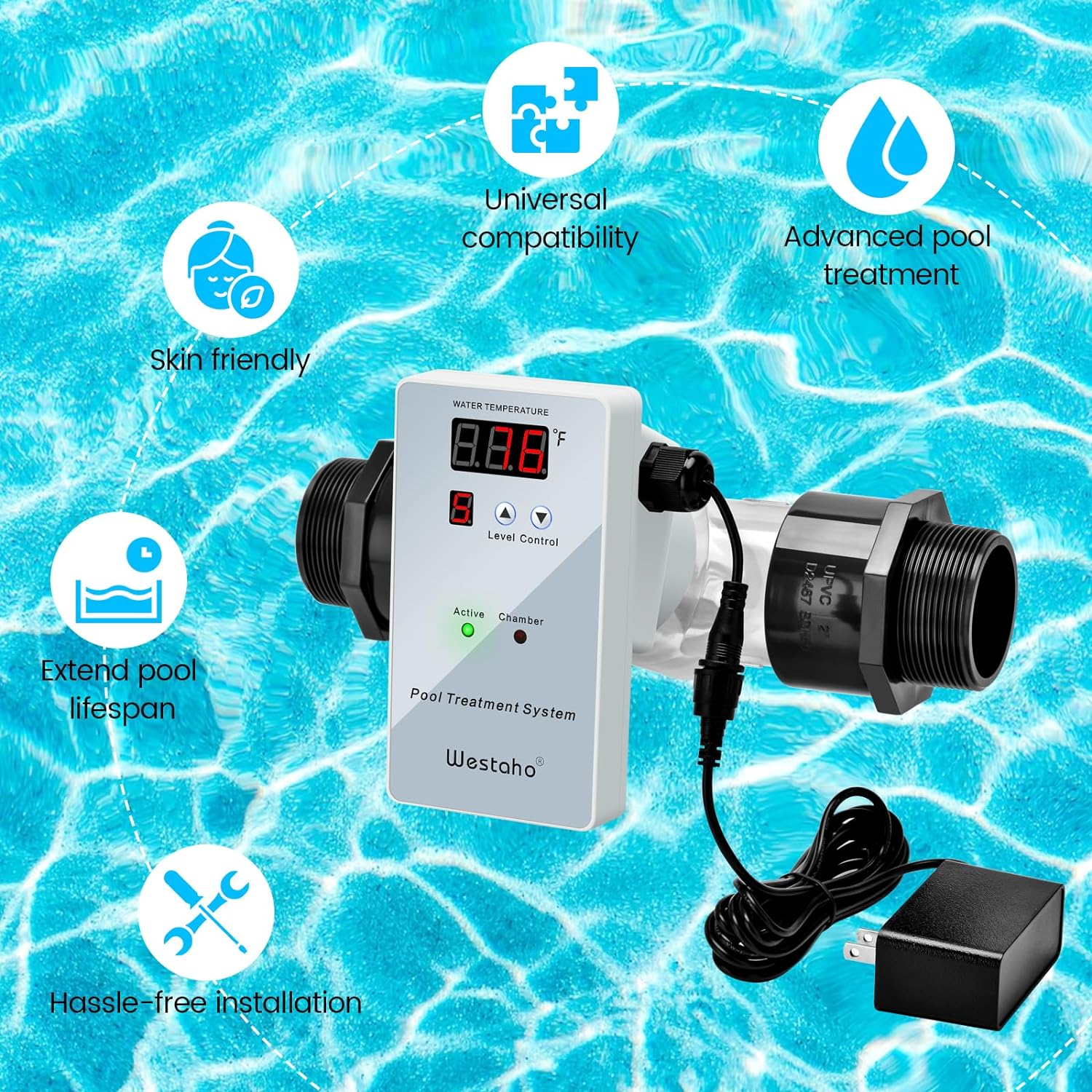
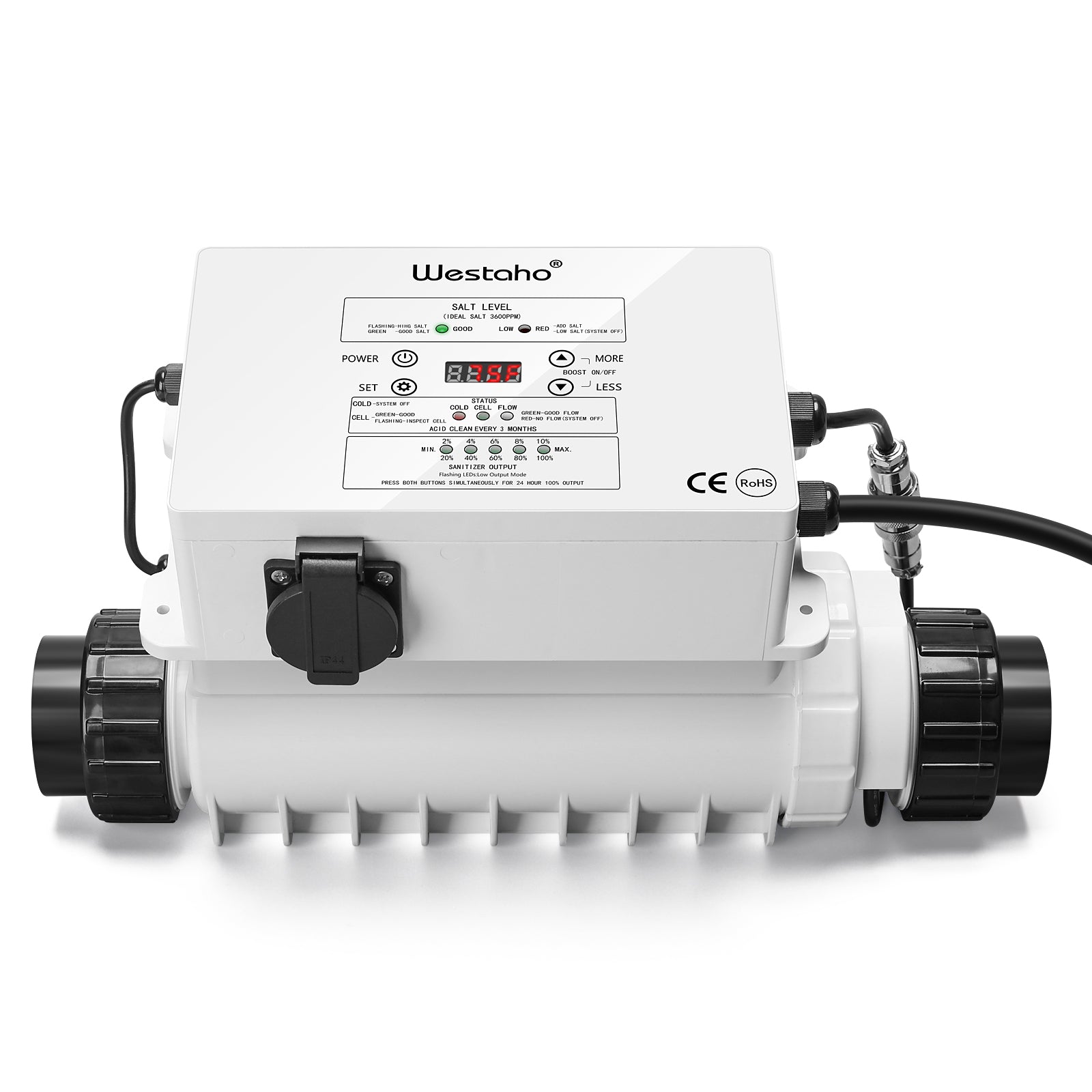
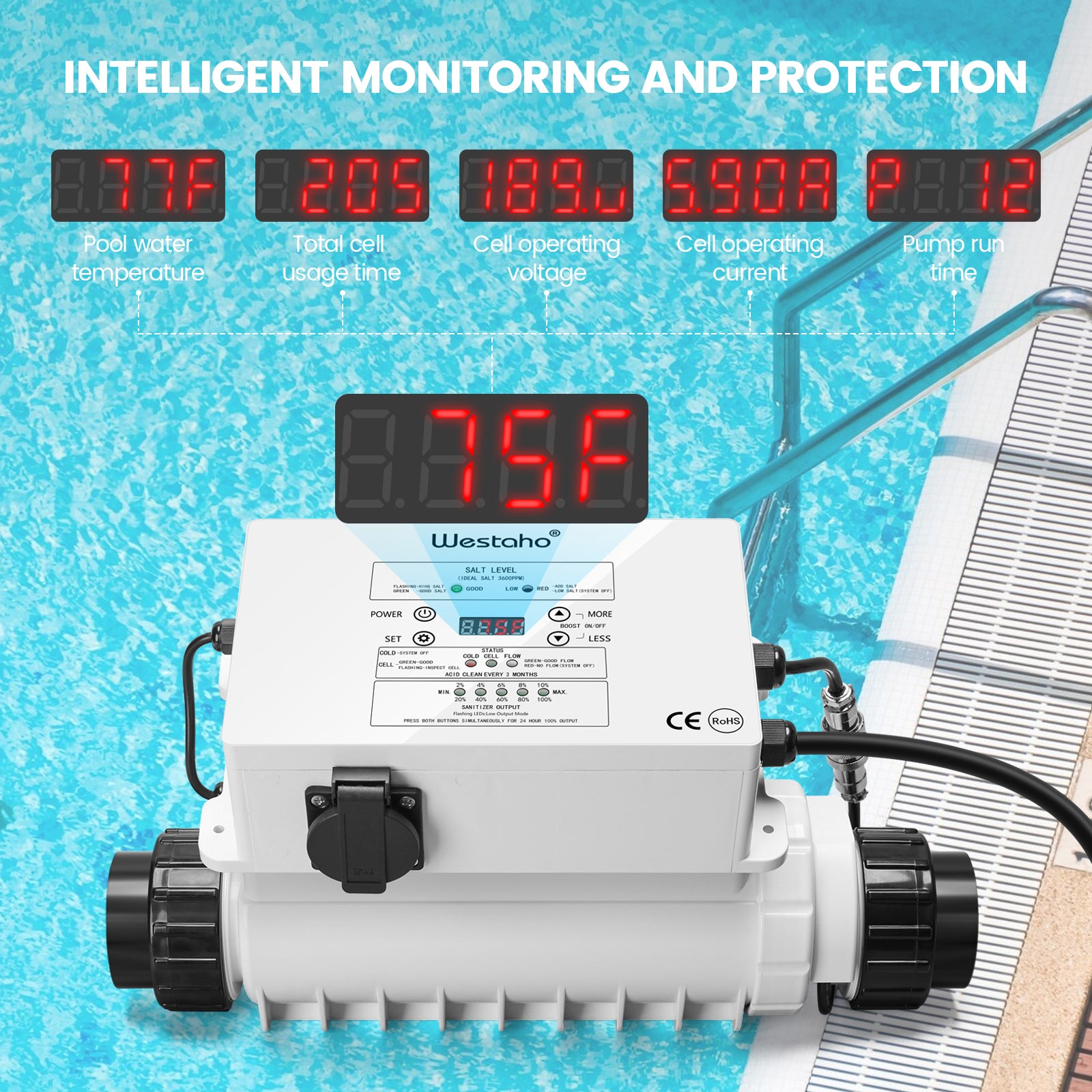
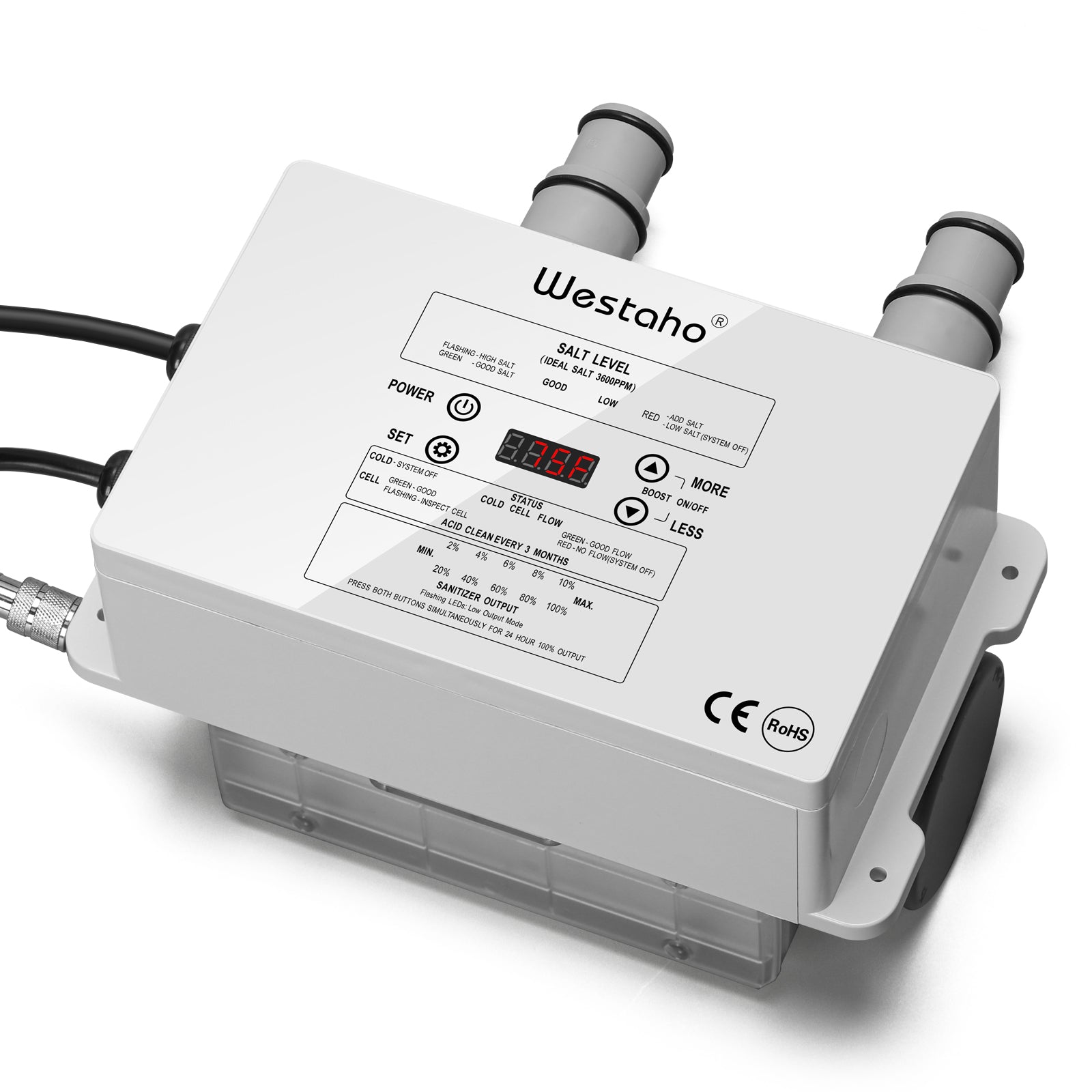
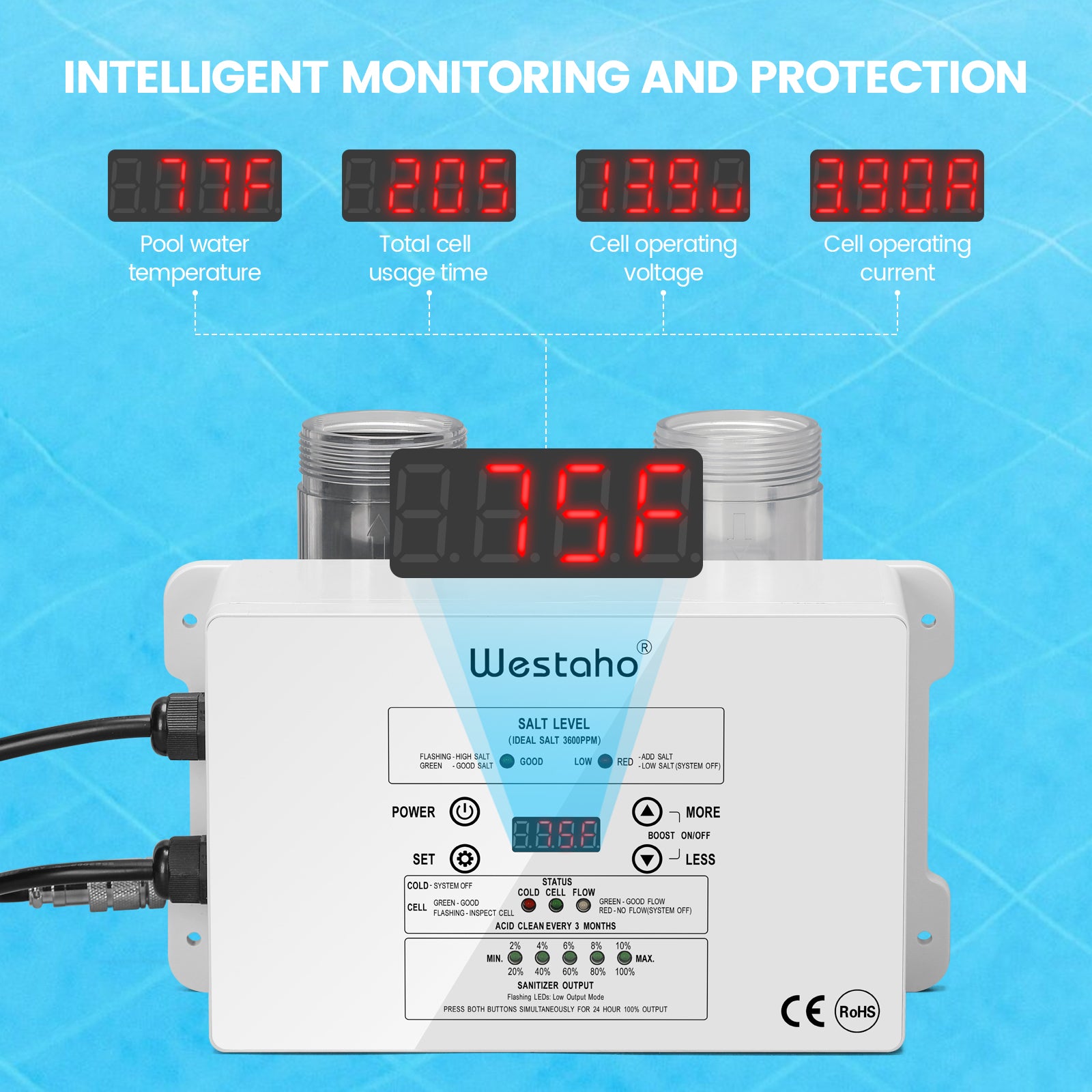


Leave a comment
This site is protected by hCaptcha and the hCaptcha Privacy Policy and Terms of Service apply.